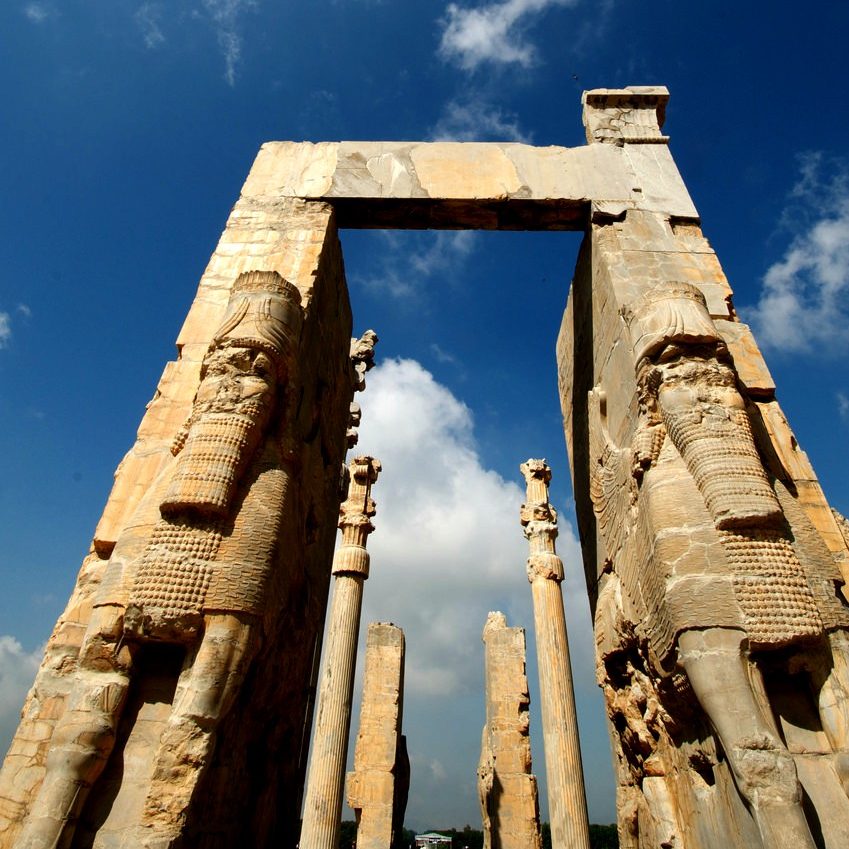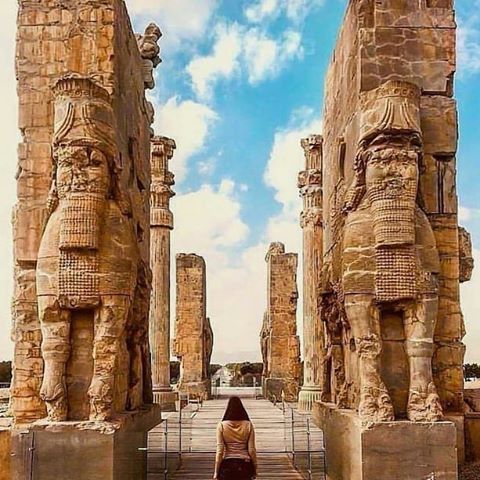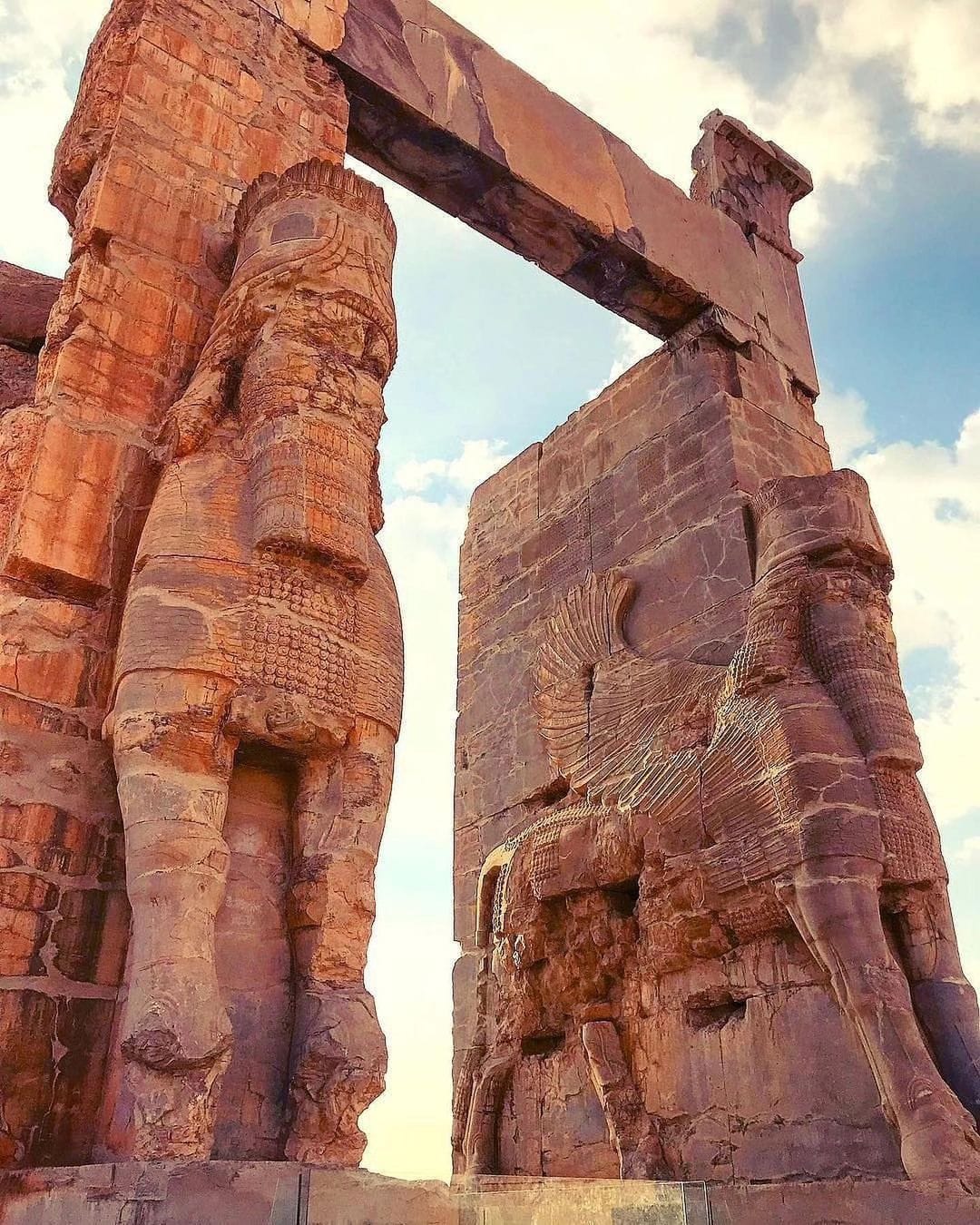
Persepolis, the ancient capital of the Achaemenid Empire, stands as a testament to the grandeur and sophistication of ancient Persian civilization. Among its many architectural marvels, the Gate of All Nations occupies a central place, serving as a symbol of power and prestige. In this blog post, we delve into the history and significance of the Gate of All Nations, situated amidst the ruins of Persepolis in modern-day Iran, uncovering the stories and secrets hidden within its majestic walls.
1. A Gateway to the Achaemenid Empire The Gate of All Nations, also known as the Gate of Xerxes, was constructed during the reign of King Xerxes I (486–465 BCE) as part of the expansive complex of Persepolis. This monumental structure served as the main entrance to the royal palaces and audience halls, welcoming dignitaries, ambassadors, and visitors from all corners of the empire. The gate’s imposing facade, adorned with intricately carved reliefs and towering columns, reflected the Achaemenid rulers’ desire to showcase their authority and magnificence to the world.

2. Symbolism and Architecture As we approach the Gate of All Nations, we are struck by its architectural splendor and symbolic significance. The gate’s design embodies the fusion of artistic motifs and architectural elements from diverse regions of the Achaemenid Empire, reflecting the empire’s multicultural identity and imperial ideology. The imposing bull-headed capitals atop the columns and the intricately carved reliefs depicting mythical creatures and royal insignia evoke a sense of power, majesty, and divine protection, conveying the might and glory of the Persian kings.

3. Historical Context and Cultural Legacy The Gate of All Nations stands as a tangible link to the rich tapestry of Persian history and culture. As the ceremonial gateway to the heart of the Achaemenid Empire, it witnessed the comings and goings of kings, ambassadors, and envoys, shaping the destiny of nations and empires. Despite the passage of millennia and the ravages of time, the gate continues to inspire awe and reverence, serving as a testament to the ingenuity, creativity, and resilience of ancient Persian civilization.
4. The Importance of Archaeology The archaeological excavations and preservation efforts at Persepolis, including the Gate of All Nations, highlight the importance of safeguarding our cultural heritage for future generations. Through meticulous excavation, documentation, and conservation, archaeologists strive to unravel the mysteries of the past and preserve the legacy of ancient civilizations. By studying sites like Persepolis, we gain invaluable insights into the complexities of human history, culture, and society, fostering a deeper appreciation for our shared heritage and the diversity of human experience.
In conclusion, the Gate of All Nations stands as a timeless symbol of Persian grandeur and imperial ambition, beckoning us to explore the wonders of ancient Persepolis and the legacy of the Achaemenid Empire. As we marvel at its towering columns, intricate reliefs, and rich symbolism, we are reminded of the enduring power of architecture to transcend time and space, connecting us to the stories and civilizations of the past. Through archaeology and historical inquiry, we continue to unlock the secrets of Persepolis and celebrate the enduring legacy of ancient Persia.


